By technical editor Matt Allard and site editor Dan Chung:
DJI is without doubt the most popular brand of quadcopter available on the market. From the original Phantom onwards, the firm has continued to evolve its offerings to give much improved stability and ease of use.
With the announcement of the Inspire 1, DJI has taken lessons learned from the Phantom, Phantom 2, and Phantom 2 Vision models, as well as their Spreadwings professional lineup, and given us the next generation of prosumer quadcopters.
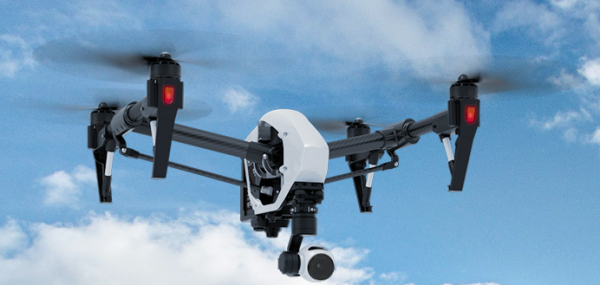
The Inspire 1 launched with much fanfare online, a promo video from Philip Bloom and a live streaming event featuring television’s Mythbusters. It takes all the latest advances in prosumer level aerial tech and packages them into a single product at an attractive price for professional image creators and high end prosumers.
Looking like a device straight from a science fiction movie the Inspire 1 has the ability to ‘transform’ its shape by retracting its legs after takeoff – giving the camera a fully clear 360 degree rotation to view the ground below.
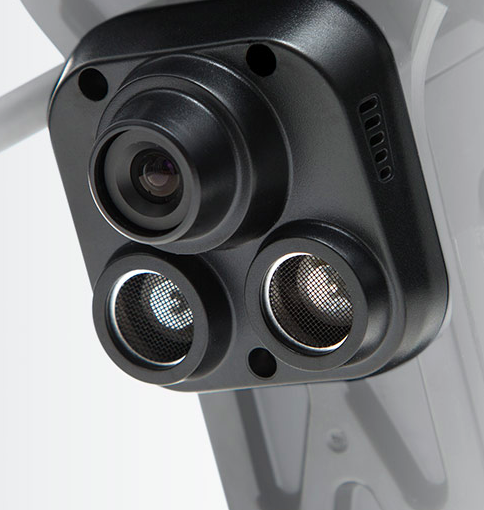
One major advance is the inclusion of Optical Flow technology. Optical Flow aids flying indoors where a GPS signal can’t be received. Indoor flying is difficult even in the hands of an experienced pilot, but according to DJI it is now possible to fly with relative safety by using the intelligent stabilisation technology. Optical Flow uses a special camera that monitors the ground 50 times per second, combined with ultrasonic waves (sort of how sonar works) to keep track of where the quadcopter is in 2D space, how far it has moved and how fast it is moving. This technology also allows fixed hovering, by letting the Inspire 1 fix in on a specific spot. It seems that the Optical Flow mode is limited to aiding flight up to 5m above ground and the range from the operator is limited to 250cm – something that may help to allay safety concerns in public places.
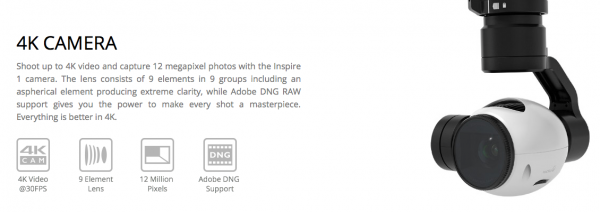
The new aerial device features a 4K capable camera that uses a 12 megapixel Sony imager for stills and video. It can record 4K (4096 x 2160) at 24, 25 and 30P and it can also record HD at up to 60fps. There are dedicated anti-distortion (ND) and protective filters that attach to the front of the lens. Hopefully there will be different neutral density strengths available in future.
The camera has a ball-like design that can rotate through 360 degrees and is fully stabilised with the company’s Zenmuse three-axis brushless gimbal technology. On the downside you cannot mount other manufacturers’ cameras such as the popular GoPro Hero line – however, DJI say that the Inspire 1’s camera is detachable and will be upgradable in the future if DJI improve camera technology. It will be interesting to compare the 4K image out of the Inspire 1 camera to that of the Hero 4 – obviously a Hero 4-equipped DJI Phantom 2 is less capable than the Inspire 1, but also considerably cheaper.
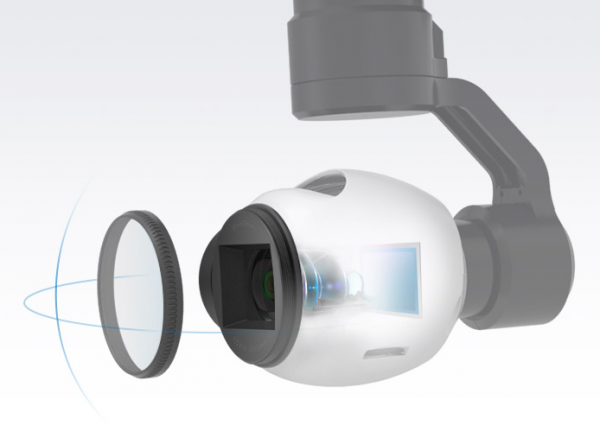
The camera has manual control of exposure, white balance and ISO, but the lens is fixed focal length and fixed in focus. It records MP4 in an MOV wrapper (AVC/H.264) to a micro SD card of appropriate speed. For the majority of aerials this won’t be a problem as everything is in focus anyway – but low level shooting with subjects may suffer as a result.

Lightbridge technology will give the Inspire 1 an enormous range of around 1.7km from the operator, while still maintaining a HD feed (to use this feature it looks like the Lightbridge Ground Unit as well as compatible mobile device need to be purchased – B+H have corrected this and it now looks like everything you need is included). For single-operator flights a dial on the transmitter is used to control the gimbal tilt and pan. An optional second remote control allows for separate camera control by the videographer, while the pilot flies the Inspire 1.
One very nice touch is the dedicated video and still triggers on the remote itself. A mobile app also allows for rapid setup.
The Inspire 1 weighs 2.9 kg with battery – almost the double the weight of the company’s Phantom 2 Vision. The kit will come with a transmitter, flight battery, and battery charger. The battery used by the Inspire 1 incorporates smart circuitry, much like the Phantom 2 and S1000 batteries. The advantages are a simplified charger and battery maintenance compared to standard RC LiPo batteries, which require separate balancing leads and, in some cases, have to be timed when recharging to avoid overcharge.
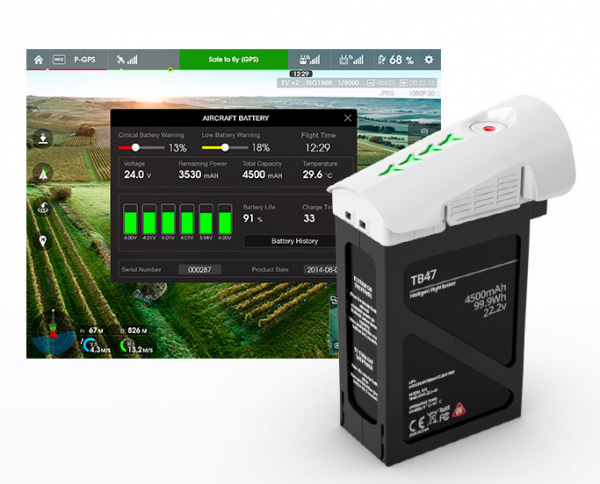
The drawback, at least to those coming from the hobbyist side, is that you are locked into DJI’s proprietary battery system. For news and documentary shooters roaming the planet it is worth noting that the batteries are still of the Lithium Polymer type and may be hard to transport on airlines as security restrictions get ever tighter. Flight time per 5700mAh battery is specified at approximately 18 minutes. Maximum flight altitude is 4500m.
It is an exciting time in the world of quadcopters. DJI has come a long way since the original Phantom – and now, with improved flight capabilities, a 4K integrated camera and built in video transmission they seem to have raised the bar again. That said, lawyers, civil liberties groups and governments all have concerns about the use of drone technology for image creation. Surely the more advanced features offered by craft like the Inspire One will trigger another round of public debate. Higher resolution imagery, vastly greater ranges and a higher degree of autonomy at low levels are great technological advances but also offers a big leap forward for anyone seeking to use these devices for nefarious activities.
The Inspire 1 is available to pre-order with packages starting at $2899 US. It is expected to ship at the beginning of December.





